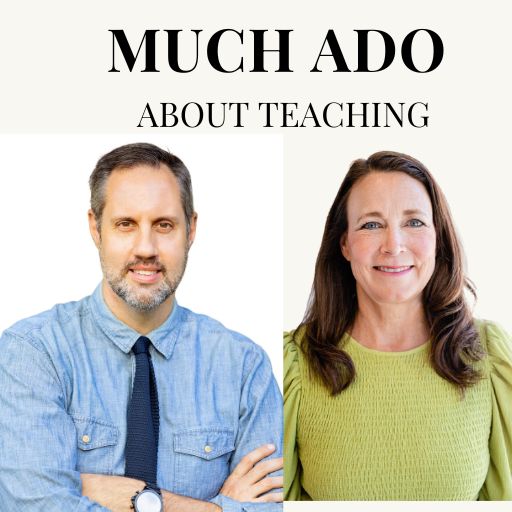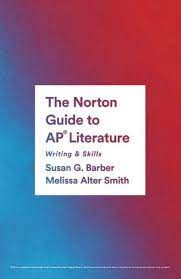I only teach seniors (a blessing then a curse after spring break), and by the time they get to senior English, most roll their eyes and sigh heavily when I tell them we’re starting poetry. Some of this is just normal senior attitude, but some is a classroom experience that has left students uninspired and even disgruntled with poetry. This makes me sad, and my mission is now making sure they have a positive experience with poetry before they leave high school.
So in honor of National Poetry Month, I’m revisiting my Ten Commandments for Teaching Poetry. I first wrote these seven years ago after being frustrated at my own teaching of poetry and knowing I needed to change my approach. What I didn’t realize at the time was that this changing of instruction would not only benefit my students but me as well as a teacher and a person.
- Allow students to build their own interpretation. The goal of my classroom is to help students learn to read and enjoy poetry on their own without relying on a teacher (or Google) to tell them what the poem “means.” The poem becomes a vehicle for teaching strategies to unlock meaning instead of a scavenger hunt to find and identify devices. This does not mean we don’t discuss devices while we’re reading poetry; we do but with the intention of how they expand our meaning of the subject of the poem and aid in building an interpretation. The hardest part of allowing students to make meaning on their own means I have to shut my mouth (so difficult for this 7w8 enneagram). The goal though not to teach the text but rather provide students the skills and space to experience poetry on their own.
- Expose students to a variety of poems. Just as some people prefer jazz over big band or hip hop over country, poetry preferences exist. While I prefer modern poetry, teaching only Clint Smith and Ada Limon is a disservice to my students (even though oh what a year we could do with just the two of them). They should be reading Byron (okay I do love the broody Romantics as well), Donne, Frost, and Oliver as well. Brian’s Poetry March Madness (which can be done anytime of the year) is a great way to expose students to a wide variety of poems or invite a different staff member in weekly to read their favorite poem.
- Student choice. Research proves that choice reading of texts increases student engagement and motivation. For the last seven years I have incorporated poetry blogs into our year having students choose a poet and write a monthly post on one of the poet’s poems. The variety of poems that students have read is far more than any unit I could put together. Student choice does not have to be this structured; have a student bring a poem each Friday to read in class which not only gives students a chance to research and find poems but give teachers insight into their students.
- Questions are okay, actually preferred. Students are often afraid of poetry because they don’t understand it. They have been forced to choose A, B, C, D, or E, and now they’re told a poem can have multiple meanings. Content typically has clear specific targets and learned outcomes. Poetry is different, often leaving the reader with gaps in understanding and unanswered questions. This is uncharted waters for most students. Encouraging students to lean into what they understand and dwell on that instead of being caught up in what they don’t understand is my constant focus. While also helping them know that further insight will come over time and with subsequent readings. Teachers need to help students be okay with walking away from a poem with questions. Better yet, share your questions while reading poems with students. Many times I have stood in front of the class and said, “I have no idea what this means or these lines always confuse me even though I’ve read this poem 100 times. What do y’all think?”
- Identify shift and consider structure. We are drawn to poetry because of its figurative language and lyrical qualities but the structure of a poem, just like the beams and pipes and inner parts of a building, are just as essential in a poem. Coaching students to identify a shift(s) is the single most important concept that will help them build their own interpretation. Once a students identifies a shift or multiple ones, they have chunked the poem into manageable sections and can start thinking about what the poem shifted from and shifted to. In addition, a basic framework of structure can often provide the tools students need to unlock meaning and yield greater understanding.I could say so much more about this, and in fact already have: Teaching Structure in Poetry has several classroom activities that I use regularly in class.
- Read for enjoyment. Somewhere along the way teachers got the idea that everything text presented in class had to be dissected, analyzed, and taught for assessment; this is simply a disservice to our students. When I listen to music, I sing along, dance, and often comment on songs but rarely identify figurative language in the lyrics and how the syncopation adds to the melody; I listen to enjoy. The same is true for poetry: we need to offer opportunities for our students to “waterski across the surface of a poem” instead of “beating it with a hose to find out what it really means.”
- Teach a poetry collection. I first taught Smith’s Counting Descent (unit plan here) in 2017, and my classroom has never been the same. Much like the novel, poetry collections have arcs and intentionality and are a great way to introduce thematic ideas. The addition of a poetry collection to the curriculum signals poetry is a staple, not an afterthought, of the course. If you can only make one change in your classroom for next year, teaching a collection is my You can find some of my favorite collections to teach in class here.
- Frame poetry as art. Good poetry is timeless but sometimes meanings get lost in generational gaps, archaic language, and abstract ideas. Framing poetry as one of the arts – just like visual art, performance art, music, etc. – tethers it to movements and events occurring in society; this placement of poetry in a specific time and place often provides enough framework for students to not feel overwhelmed. When doing this, however, resist the urge to leave a poem in just one specific time and place. Explore universal ideas across time periods explored in poems and through text-to-text as well as text-to-self connections.
- Punctuation matters. When given a poem to read, students will pause at the end of each line and ignore punctuation. Not only does this make for awkward reading especially if a poem doesn’t rhyme, but students have a more difficult understanding of a poem because they’re reading without considering punctuation – something that would never happen with prose (well mostly). When I annotate a poem, I always mark a forward slash at each period which helps me chunk the poem into smaller sections for understanding. True – poetry is lyrical and should be appreciated in that sense but when students are having trouble simply reading a poem, we take it sentence by sentence reading like prose to build confidence.
- Have fun! Be creative with teaching and reading poetry. Celebrate Poem in Your Pocket Day on April 10th this year or help your students write slam poetry with Ted Ed’s “Become a Slam Poet in Five Steps” lesson. Watch a Poetry Out Loud video each Monday; better yet, have students perform their own recitations. Write poetry, chalk meaningful lines around the school, Zoom with poets, study rock and roll as poetry – the options are limitless!
Poetry stands in the gap when we have thoughts and feelings – either positive or negative – that we cannot put into words. Poetry helps us celebrate and grieve. Poetry helps us comprehend the vastness of our word and the minute details within it. Poetry serves as protest and pronouncement. Our students deserve to know the depth and breath that poetry offers, and we have the power and position to make that happen.

Susan Barber teaches AP® English Literature and Dramatic Writing for Film, Stage, and TV at Midtown High School in Atlanta, Georgia, and serves as co-chair of the AP® Literature Development Committee. She is the coauthor of The Norton Guide to AP® Literature: Writing & Skills (2022) and 100% Engagement: 33 Lessons to Promote Participation, Beat Boredom, and Deepen Learning in the ELA Classroom forthcoming in May. Susan is most proud of the work she does on a daily basis in E216 and never tires of the beauty and chaos of the classroom.












